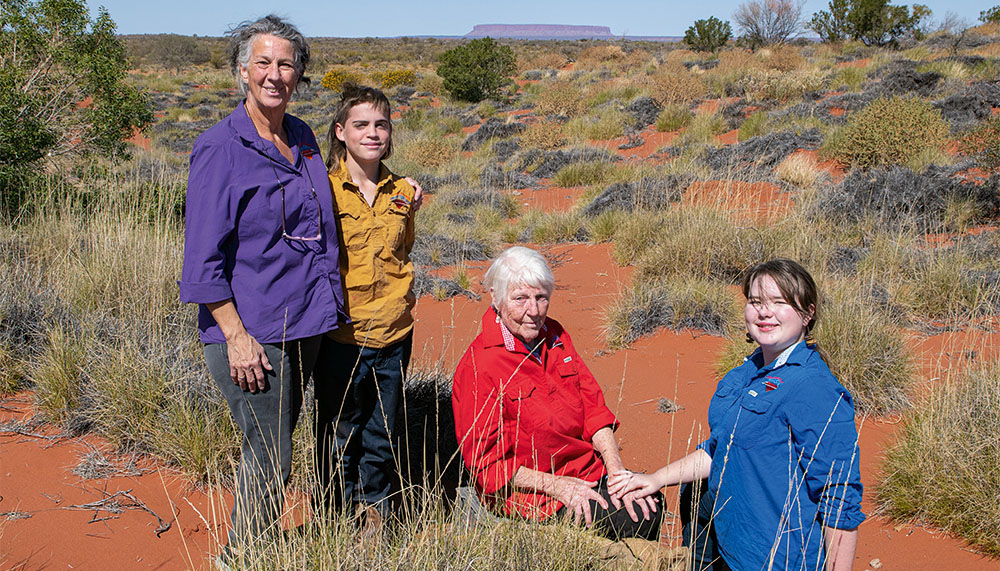Making paper from native grasses has given the Severin family of Central Australia another income stream in their diverse operation.
Story + Photos Mandy McKeesick
On a red sand dune overlooked by Mt Conner on Curtin Springs Station, NT, Lyndee Severin works alongside her mother Sylvia Matthews, her granddaughter Emma Daisy and her grandson Matt Casey. With secateurs in hand, they brave penetrating spines to harvest spinifex. On another day they may be collecting the phylloids (often incorrectly called needles) of desert oak, tufts of kangaroo grass, flower heads of purple mulla-mullas, or even bangtails from cattle. These organic fibres are turned into handmade paper, in what has become a surprisingly successful and innovative way to diversify their family operation.
Once the native grass fibres are collected, they are brought to the old abattoir and cooked in a caustic solution. “Finer fibres such as kerosene grass may only take one day, but we can cook desert oak for up to five days,” Lyndee says. “We are looking for the grasses to go from a dry spaghetti texture to wet spaghetti.” The resultant mush is then rinsed in twin-tub washing machines, beaten for 10 minutes, put into A3 or A4 frames, and turned out in layers to be quickly pressed and then dried.
Tours are held daily, in which travellers walk through the abattoir’s original knocking-box before witnessing one of 20 species of grass being transformed into paper, watching as additives such as clay, bottlebrush and even manure are used for colour and texture. “We never intended the paper-making to be on a commercial scale,” Lyndee says. “Instead, we find the paper is a timely representation of the landscape and gives visitors an authentic and emotional connection. It allows us to have conversations with those people about our country and how we manage it to run a profitable and sustainable beef business.”
This story excerpt is from Issue #141
Outback Magazine: February/March 2022










